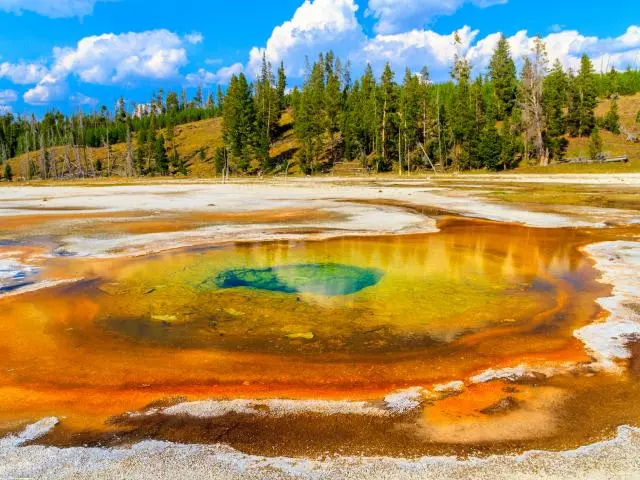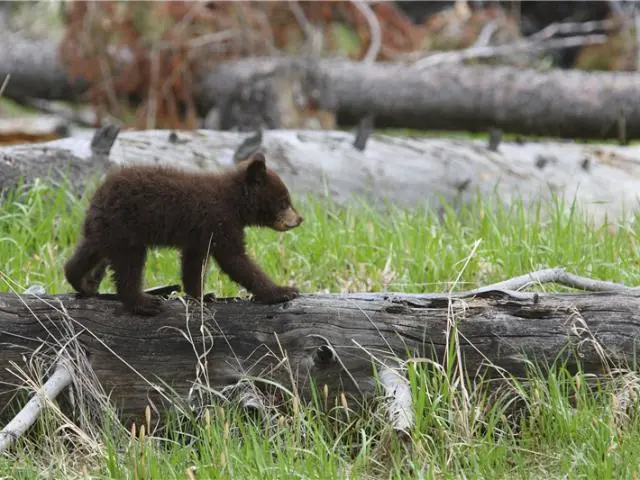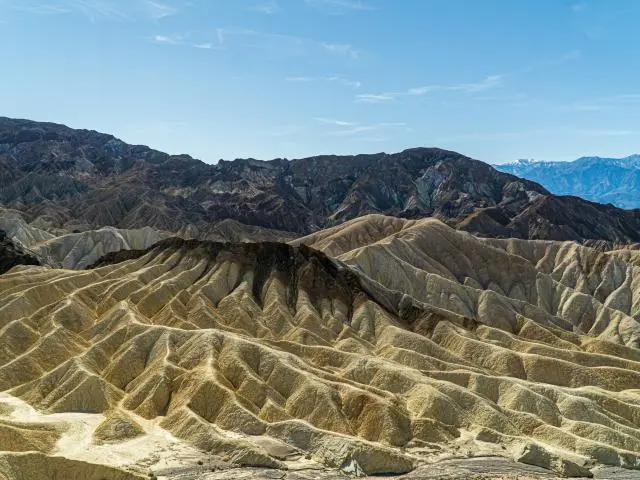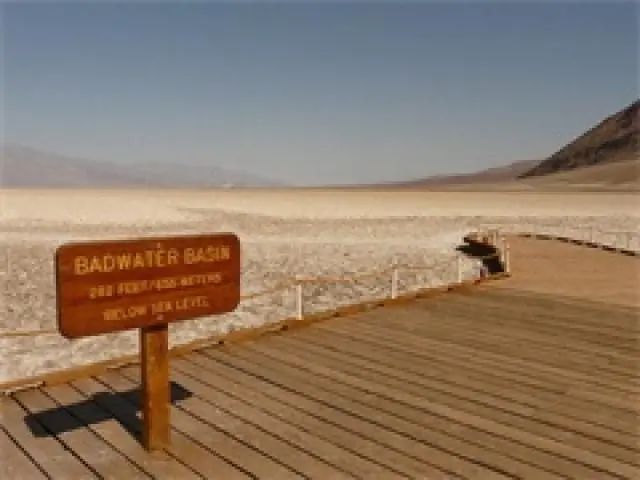Day 1 Las Vegas - Bryce Canyon National Park via Cedar Breaks (259 miles)
Day 2 Bryce Canyon - Salt Lake City (268 miles)
Day 3 Grand Tetons National Park
Day 4 Yellowstone National Park
Day 5 Yellowstone National Park
Day 6 Yellowstone National Park and Rocky Mountains (370 miles)
Day 7 Valley of Fire - Las Vegas (357 miles)
Day 8 Las Vegas - Death Valley - Bishop (248 miles)
Day 9 Bishop - Yosemite National Park (71 miles)
Day 10 Yosemite National Park
Day 11 Yosemite National Park - San Francisco (167 miles)
Day 1:
Las Vegas - Bryce Canyon National Park via Cedar Breaks (259 miles)
A beautiful drive today takes us to a 10,000 ft summit through
Cedar Breaks for spectacular views of ancient lava flows and the Sevier River Valley below. Arriving in
Bryce Canyon National park in time for a delicious rim side picnic lunch you will have a full afternoon of hiking. Choose a relaxing stroll along the rim of the world famous Amphitheater or a hike deep into the depths of the canyon and get up close and personal with the hoodoos that make up this unique landscape. Take in a ranger program and learn the geology of this fascinating and thrilling park.
Spend the evening around a campfire and enjoy a soak in the outdoor hot tub under the stars after a tasty all American BBQ. Camp Ruby's Inn Campground in Bryce City.
-
Bryce Canyon National Park, UT
The canyons of this national park form exquisite natural amphitheaters. Many visitors choose to sightsee by car, as the park is very easy to drive through.
Day 2:
Bryce Canyon - Salt Lake City (268 miles)
This morning takes us North to Salt Lake City Utah, home to the tabernacle choir, for an afternoon of exploring Mormon Pioneer history. Enjoy magnificent Salt Lake Mormon Temple and see the State Capital Building and founder Brigham Young's Territorial Governor's Mansion.
-
Salt Lake City, UT
Utah's gorgeous capital city sits amidst the mountains of the American Southwest on the shores of the breathtaking Great Salt Lake. The city is steeped in history and architecture in addition to wondrous vistas and scenery.
Day 3:
Grand Tetons National Park
The Grand Tetons Mountain Range rises above a scene rich with abundant wildlife, pristine lakes, and spectacular mountain peaks. Take a walk to Inspiration Point or enjoy a scenic stroll around Jenny Lake while gazing up in awe at the surrounding landscape. Have a picnic, spot and moose or even a grizzly bear and enjoy the serenity of this remarkable place. Camp inside Grand Tetons national park.
-
Grand Teton National Park, WY
Grand Teton National Park is is located in the Rocky Mountains, Northwest Wyoming. Grand Teton National Park is noted for its stunning mountain vistas, its shimmering alpine lakes and its abundant wildlife.
Day 4:
Yellowstone National Park
The crown jewel of the National Parks! The world's first national park. A mountain wilderness, home to grizzly bears, wolves, and herds of buffalo and elk. Visit Old Faithful and the Grand Prismatic Pool, Yellowstone Canyon, explore geysers throughout both the North and South loop. Spend two days exploring this huge and fascinating national park with your expert Guide. Don't forget your bathing suit for a soak in Mammoths natural hot springs! Camp West Yellowstone or similar.
-
Yellowstone, WY
Largest, oldest and most famous national park - a fascinating scenery of hot springs, geysers, canyons & waterfalls
Mammoth Hot Springs
This large complex of hot springs is impressive both for its unique beauty as well as its scale. Formed hundreds of thousands of years ago by volcanic and seismic activity, these springs are one of Yellowstone's most popular spots.
Old Faithful Geyser
Old Faithful is a cone geyser in the Upper Geyser Basin of Yellowstone National Park. It is one of the park's most well-known natural features, and is famous for its predictability. It generally erupts every 91 minutes.
Grand Canyon of the Yellowstone
This impressive gap in the earth in the first large canyon on the Yellowstone River. It is 24 miles long, and can reach a quarter-mile in depth and 3/4 a mile in width. It is gorgeously colored.
Day 5:
Yellowstone National Park
Continue to discover Yellowstone with your guide. Go on hikes ranging from easy to moderate and 2 to 5 miles (3 to 8 km) in length, and see more spectacular volcanic features. Your guide will tailor hikes to your group's abilities and interests. . Camp West Yellowstone or similar.
Day 6:
Yellowstone National Park and Rocky Mountains (370 miles)
Get up close and personal with some wildlife with a fun and educational visit to the Yellowstone Grizzly Bear and Wolf Discovery Center this morning. This afternoon get ready for more spectacular Rocky Mountain scenery. With three major canyons, the Provo Lake Region offers phenomenal views of the Rockies, fantastic walks and is the perfect spot for some lake side fun and a last night BBQ blow out!
Camp Rocky Mountains Lake Provo.
-
Yellowstone, WY
Largest, oldest and most famous national park - a fascinating scenery of hot springs, geysers, canyons & waterfalls
Yellowstone Bear World
This drive-through wildlife park is home to a litany of large and rare local animals, including Rocky Mountain Elk, Bison, White-tail Deer, Mule Deer, Rocky Mountain Goats, Moose and of course American Black Bear, Grizzly Bear and Gray Wolves.
Day 7:
Valley of Fire - Las Vegas (357 miles)
En route back to the bright lights of Sin City, explore the trails and dunes of Nevada’s first state park - Valley of Fire state park. With bright red Aztec sandstone outcrops nestled in gray and tan limestone this state park is a real treat. Your day concludes in Las Vegas in the late afternoon in time explore this fabulous fun city by night!
-
Valley of Fire State Park, NV
This park in the southeasternmost regions of Nevada gets its name from the way sunlight looks when reflected off the red sandstone formations. The brilliant dunes and rocks are more than 150 million years old.
Admission (Optional): Adult $5; Child $5
Day 8:
Las Vegas - Death Valley - Bishop (248 miles)
Heading to California this morning you will embark on a guided tour of Death Valley National Park. Enjoy photo stops and shorts walks at Zabriskie Point, Artist's Palette, Badwater BasinSalt flats, Furnace Creek Visitor Center, Devil's Golf Course and the Mesquite Sand Dunes. After a picnic lunch, drive through spectacular scenery to the old Gold Rush Historic town of Bishop for your night stop.
-
Death Valley, CA
Death Valley is a region of the Mojave Desert which has the distinction of being the lowest and driest area of North America. The hottest temperature ever recorded on Earth, occurred here.
Zabriskie Point
Zabriskie Point is a part of Amargosa Range located east of Death
Valley in Death Valley National Park in California, United States, noted for
its erosional landscape. It is composed of sediments from Furnace Creek Lake,
which dried up 5 million years ago — long before Death Valley came into existence.
Artist's Palette
Tucked behind an unassuming yellow landscape, the rainbow of Artists Palette is the highlight along the Artists Drive Scenic Loop. Here, visitors marvel at an array of colors (red, orange, yellow, blue, pink, and green), splashed across the hills. These colors are from volcanic deposits rich in compounds such as iron oxides and chlorite, which creates a rainbow effect.
Badwater Basin
This barren basin in the heart of Death Valley National Park has an elevation of 282 feet below sea level, making it the lowest point in North America.
Golf Course of Devil
The Devil's Golf Course is a large salt pan on the floor of Death Valley. It was
named after a line in the 1934 National Park Service guide book to Death
Valley National Monument, which stated that "Only the devil could play golf"
on its surface, due to a rough texture from the large halite salt crystal formations.
Mesquite Flat Sand Dunes
The Mesquite Flat Sand Dunes are at the northern end of the valley floor and
are nearly surrounded by mountains on all sides. Due to their easy access from
the road and the overall proximity of Death Valley to Hollywood, these dunes
have been used to film sand dune scenes for several movies.
Day 9:
Bishop - Yosemite National Park (71 miles)
Crossing the Tioga Pass this morning provides an extremely scenic route passing by highlights such as Olmsted Point, Lake Tenaya, Tuolumne Meadows and Mono lake en route to Yosemite Valley. Visit the Valley Visitor Center and exhibits, take a mini tour and get ready for a full day of exploration tomorrow.
Weather permitting - in the event that the Tioga Pass is closed this tour will reroute through Lake lsabella instead of Bishop
-
Yosemite National Park, CA
Yosemite National Park in central California is best known for the amazing granite cliffs of the Yosemite Valley as well as the towering Yosemite Falls and Sequoias. Millions of people every year journey to this UNESCO World Heritage Site.
Olmsted Point (Passing By)
This scenic viewing area in Yosemite National Park offers a breathtaking view into Tenaya Canyon and the northern side of Half Dome. It is one of the park's most celebrated viewpoints.
Tenaya Lake (Passing By)
This alpine lake in Yosemite National Park sits at an elevation of 8,150 feet. It was formed over thousands of years by glacial activity against the local granite deposits.
Day 10:
Yosemite National Park
Spend a full day exploring the walks offered in the park. There are countless walks ranging from easy to strenuous or opt for a guided tour with your expert guide to the premierpanoramas within the park such as Bridalveil Falls, Lower Yosemite Falls, views of Half Dome and El Capitan. You can also opt for some free time relaxing or cycling along the Merced River.
-
Yosemite National Park, CA
Yosemite National Park in central California is best known for the amazing granite cliffs of the Yosemite Valley as well as the towering Yosemite Falls and Sequoias. Millions of people every year journey to this UNESCO World Heritage Site.
Bridal Veil Falls
Located in the Yosemite Valley California's Yosemite National Park, Bridal Veil Falls are one of the park's most famous sites. Millions of people every year come to see the 617-foot-high waterfall, which flows year-round.
Half Dome
The Half Dome is one of the most recognizable formations in California's Yosemite National Park. It is known the world over as a challenging and rewarding hiking and mountain climbing location, attracting thousands of adventurers every year.
Merced River
This 145-mile-long river flows from the Sierra Nevada down into California's Central Valley. Visitors to Yosemite National Park can hike along the river's banks or even go for a whitewater rafting trip down its rapids.
Yosemite Falls
The Yosemite Falls in Yosemite National Park, California are the highest known waterfall in all of North America. The Falls are on one of the park's most famous attractions, especially in the spring when they have the most water.
El Capitan
The largest granite monolith in the world, El Capitan is located across from Bridalveil Falls in Yosemite National Park. It juts up about 3,000 feet from the ground, and is a favorite of experienced rock climbers.
Day 11:
Yosemite National Park - San Francisco (167 miles)
In the morning we will leave Yosemite and drive to San Francisco, CA. Here, we will visit some of the city's most famous landmarks, including the Fisherman's Wharf, Pier 39, Haigh Ashbury and the Golden Gate Bridge.
-
San Francisco, CA
San Francisco, the heart of central California's Bay Area, is famous for its iconic Golden Gate Bridge, its unique culture, and its position at the forefront of technological innovation. Beautiful weather and waterfront views await visitors as well!
Fisherman's Wharf
This San Francisco neighborhood is a popular tourist area due to its lovely scenery and abundance of shops, restaurants, museums, and other attractions. The area also hosts several annual events, such as a July 4th fireworks show.
Golden Gate Bridge
The iconic arches of San Francisco, California's Golden Gate Bridge are known the world over as a symbol of California and the San Francisco Bay area. From movies to postcards, the Golden Gate Bridge is an American icon.























 10-Day National Park Explorer Tour Grand Canyon, Yellowstone, ...
10-Day National Park Explorer Tour Grand Canyon, Yellowstone, ...
 9-Day Yellowstone, Grand Teton, Antelope & Tahoe from LA/Vegas...
9-Day Yellowstone, Grand Teton, Antelope & Tahoe from LA/Vegas...
 9-Day Yellowstone, Mount Rushmore, Grand Teton, Antelope Canyo...
9-Day Yellowstone, Mount Rushmore, Grand Teton, Antelope Canyo...
 10-Day Yellowstone, Mount Rushmore, Grand Teton, Antelope Cany...
10-Day Yellowstone, Mount Rushmore, Grand Teton, Antelope Cany...
 9-Day Yellowstone National Park, Antelope Canyon, Monument Val...
9-Day Yellowstone National Park, Antelope Canyon, Monument Val...